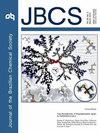Photocatalytic Degradation of Bentazon Pesticide by a Fe2O3-TiO2 Composite Catalyst Irradiated by UVA, UVB, and Natural Light
IF 1.3
4区 化学
Q3 CHEMISTRY, MULTIDISCIPLINARY
引用次数: 0
Abstract
Environmental pollution by contaminants of emerging concern, among these various pesticides, has been a concern of environmentalists and scientists around the world. Thus, efforts to mitigate the impacts of these substances have been carried out, and the use of advanced oxidation processes, such as photocatalysis, is an alternative. This work sought to synthesize a composite photocatalyst based on iron oxides and titanium dioxide to assess its applicability in degrading the herbicide bentazon (BTZ) by a lamp that simulates the solar spectrum (visible, ultraviolet A and ultraviolet B) and sunlight. Photocatalytic degradation reached 51% in 120 min with a rate constant k = 0.0058 min−1 when a UV-Vis lamp of 300 W was used. The applicability was demonstrated under sunlight radiation, reaching 38% degradation of a bentazon solution (4.1 × 10−4 mol L−1) after 320 min. TiO2 and Fe2O3 were synthesized similarly but showed no degradation under the same conditions. Thus, Fe2O3-TiO2 is an inexpensive and non-toxic material capable of efficiently conducting the photocatalytic degradation of organic compounds, such as the bentazon herbicide.UVA、UVB和自然光照射下Fe2O3-TiO2复合催化剂光催化降解苯达松农药
在各种农药中,越来越多的污染物对环境造成了污染,这一直是世界各地的环保主义者和科学家关注的问题。因此,已经开展了减轻这些物质影响的努力,并使用先进的氧化工艺,如光催化,是一种替代方法。本研究试图合成一种基于氧化铁和二氧化钛的复合光催化剂,以评估其在模拟太阳光谱(可见光、紫外线a和紫外线B)和阳光下降解除草剂苯达松(BTZ)的适用性。当UV-Vis灯功率为300 W时,光催化降解速率k = 0.0058 min−1,在120 min内达到51%。在阳光照射下,对苯达松溶液(4.1 × 10−4 mol L−1)的降解率在320 min后达到38%。TiO2和Fe2O3的合成方法相似,但在相同的条件下没有降解。因此,Fe2O3-TiO2是一种廉价且无毒的材料,能够有效地进行有机化合物的光催化降解,如苯达松除草剂。
本文章由计算机程序翻译,如有差异,请以英文原文为准。
求助全文
约1分钟内获得全文
求助全文
来源期刊
CiteScore
2.90
自引率
7.10%
发文量
99
审稿时长
3.4 months
期刊介绍:
The Journal of the Brazilian Chemical Society embraces all aspects of chemistry except education, philosophy and history of chemistry. It is a medium for reporting selected original and significant contributions to new chemical knowledge.

 求助内容:
求助内容: 应助结果提醒方式:
应助结果提醒方式:


